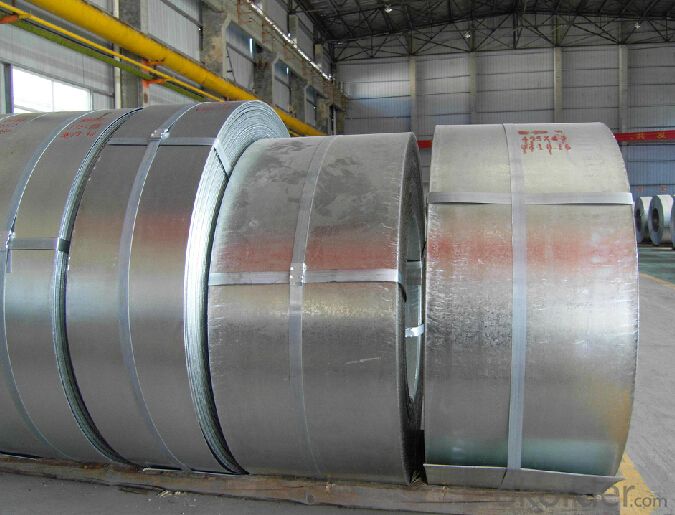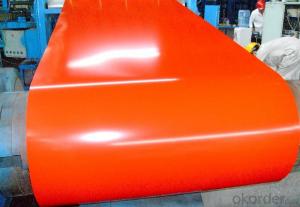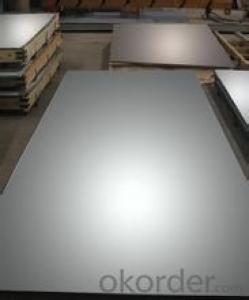Best Cold Rolled Steel Coil JIS G 3302 Walls Steel Coil ASTM 615-009
- Loading Port:
- Tianjin
- Payment Terms:
- TT OR LC
- Min Order Qty:
- 33 kg/m²
- Supply Capability:
- 11 kg/m²/month
OKorder Service Pledge
OKorder Financial Service
You Might Also Like
1.Structure of Cold Rolled Steel Description:
The raw material of cold rolled steel coil/sheet is high quality hot rolled product, and after pickling continuous rolling, degreasing, annealing,skin pass,slitting and cut to length line etc. Along with it many kinds of new technology and new process of global cold rolling production have been applied. Therefore the quality of the goods could be guaranteed. The product is widely used in outdoor and interior decoration, furnishing manufacturing, home appliance, automobile etc. it has a lower melting point than steel and good castability properties.[1] Certain compositions of cast iron, while retaining the economies of melting and casting, can be heat treated after casting to make malleable iron or ductile iron objects. Steel is also distinguishable from wrought iron (now largely obsolete), which may contain a small amount of carbon but large amounts of slag.
2.Main Features of the Cold Rolled Steel:
• Excellent process capability
• Smooth and flat surface
• Workability, durability
• Excellent heat resistance performance
• High strength
• Good formability
• Good visual effect
3.Cold Rolled Steel Images

4.Cold Rolled Steel Specification
Standard:AISI,ASTM,DIN,GB,JIS,JIS G3302 ASTM 653M EN10142
Grade: Q195~Q345
Thickness: 0.16mm~1.5mm,0.16-1.5mm
Width: 1250,600-1250mm
Coil weight:3-12 MT
Coil ID:508/610mm
Chemical composition:
C | Si | Mn | Cr | Ni | P | S |
0.150 | 0.476 | 11.231 | 12.50 | 0.900 | 0.039 | 0.010
|
5.FAQ of Cold Rolled Steel
We have organized several common questions for our clients,may help you sincerely:
1.How about your company?
A world class manufacturer & supplier of castings forging in carbon steel and alloy steel,is one of the large-scale professional investment casting production bases in China,consisting of both casting foundry forging and machining factory. Annually more than 8000 tons Precision casting and forging parts are exported to markets in Europe,America and Japan. OEM casting and forging service available according to customer’s requirements.
2.How to guarantee the quality of the products?
We have established the international advanced quality management system,every link from raw material to final product we have strict quality test;We resolutely put an end to unqualified products flowing into the market. At the same time, we will provide necessary follow-up service assurance.
3. How long can we receive the product after purchase?
Usually within thirty working days after receiving buyer’s advance payment or LC. We will arrange the factory manufacturing as soon as possible. The cargo readiness usually takes 15-25 days, but the shipment will depend on the vessel situation.
- Q:How are steel strips stamped or formed into specific shapes?
- Steel strips are typically stamped or formed into specific shapes using a variety of techniques such as pressing, rolling, bending, or coiling. These processes involve applying pressure or force onto the steel strips, either mechanically or through hydraulic systems, to reshape them into the desired configuration.
- Q:How are steel strips welded together to form larger structures?
- Steel strips are welded together to form larger structures using various welding techniques such as arc welding, MIG welding, or TIG welding. These techniques involve melting the edges of the steel strips and fusing them together using heat and pressure. The welds create a strong and durable bond, allowing the steel strips to be assembled into larger structures such as beams, frames, or even entire buildings.
- Q:Are steel strips used in the production of shipping containers?
- Steel strips are frequently employed in the manufacturing of shipping containers. Renowned for its robustness and longevity, steel is an optimal choice for constructing containers that can endure the challenges of transportation and safeguard the contents within. The structural framework of the container is often shaped by steel strips, offering stability and support. Moreover, steel strips are utilized for reinforcing the corners and edges of the container, as these regions are more prone to damage. In summary, the incorporation of steel strips in the production of shipping containers guarantees their strength, security, and ability to withstand the demands of the shipping sector.
- Q:How do steel strips handle high-impact applications?
- Steel strips are highly durable and have excellent strength, making them well-suited for high-impact applications. They can effectively absorb and redistribute the energy generated from impacts, minimizing any potential damage or deformation. Additionally, steel strips are typically resistant to bending and breaking, allowing them to withstand intense forces without compromising their structural integrity.
- Q:Is the strip steel strip?
- Some thicker medium plate production is not produced by strip steel. In any case, the strip is a general term for strip and plate.
- Q:Can steel strips be used in the production of automotive exhaust systems?
- Yes, steel strips can be used in the production of automotive exhaust systems. Steel strips are commonly used to manufacture exhaust components such as pipes, mufflers, and resonators due to their strength, durability, and heat resistance properties.
- Q:How are steel strips used in the production of metal staircases?
- Steel strips are widely used in the production of metal staircases due to their numerous advantages. Firstly, they offer structural support and stability to the staircase framework. Often, they serve as the primary structural components, functioning as stringers or supports that uphold the treads and risers. With their high strength and rigidity, steel strips enable the construction of robust and long-lasting staircases capable of withstanding heavy loads and constant usage. Furthermore, steel strips are utilized in fabricating the treads and risers themselves. These strips are commonly shaped and welded together to form solid and secure steps, ensuring a safe and comfortable walking surface. Steel is the preferred material for this purpose because of its resistance to wear and tear, as well as its ability to withstand diverse environmental conditions. Moreover, steel strips can be tailored to meet the specific design requirements of the staircase. They can be cut, bent, and shaped into various sizes and profiles, allowing for the creation of unique and aesthetically pleasing staircases. This versatility enables the production of different styles, including straight, spiral, and curved staircases. Lastly, steel strips can be given different coatings or treatments to enhance their appearance and protect them from corrosion. This guarantees that the metal staircases retain their visual appeal and functionality over time, even in demanding environments. In summary, steel strips play a pivotal role in the production of metal staircases by providing structural support, forming the treads and risers, allowing for customization, and offering protection against corrosion. Their strength, durability, and versatility make them an ideal choice for constructing safe and visually appealing staircases.
- Q:Can steel strips be custom-made to specific dimensions?
- Yes, steel strips can be custom-made to specific dimensions.
- Q:What is the typical corrosion resistance of steel strips?
- The corrosion resistance of steel strips can vary depending on the specific type of steel and the environmental conditions they are exposed to. Generally, steel strips are moderately resistant to corrosion. Steel is primarily composed of iron, which tends to rust when exposed to moisture and oxygen. However, the addition of elements like chromium, nickel, and molybdenum can enhance its corrosion resistance. For instance, stainless steel strips contain a minimum of 10.5% chromium. This forms a protective oxide layer on the steel's surface, providing excellent resistance against moisture, oxidation, and corrosive substances. Stainless steel strips are commonly used in applications where corrosion resistance is critical, such as chemical plants, food processing equipment, and marine components. On the other hand, carbon steel strips, with lower alloy content, are more prone to corrosion. They may need additional coatings or treatments to improve their resistance. Carbon steel strips are often used in applications where corrosion is not a major concern, like automotive components, machinery, and structures. It's important to consider various factors, such as aggressive chemicals, humidity, temperature, and mechanical stresses, as they can influence the corrosion resistance of steel strips. Therefore, selecting the right type of steel and implementing proper maintenance and protection measures are crucial to ensure optimal corrosion resistance in specific environments.
- Q:What are the common challenges in manufacturing steel strips?
- Some common challenges in manufacturing steel strips include ensuring consistent thickness and width throughout the strip, preventing surface defects such as scale and scratches, maintaining proper flatness and straightness, achieving desired mechanical properties, and managing temperature control during the manufacturing process. Additionally, quality control and ensuring compliance with industry standards and customer specifications are also important challenges in steel strip manufacturing.
1. Manufacturer Overview |
|
|---|---|
| Location | |
| Year Established | |
| Annual Output Value | |
| Main Markets | |
| Company Certifications | |
2. Manufacturer Certificates |
|
|---|---|
| a) Certification Name | |
| Range | |
| Reference | |
| Validity Period | |
3. Manufacturer Capability |
|
|---|---|
| a)Trade Capacity | |
| Nearest Port | |
| Export Percentage | |
| No.of Employees in Trade Department | |
| Language Spoken: | |
| b)Factory Information | |
| Factory Size: | |
| No. of Production Lines | |
| Contract Manufacturing | |
| Product Price Range | |
Send your message to us
Best Cold Rolled Steel Coil JIS G 3302 Walls Steel Coil ASTM 615-009
- Loading Port:
- Tianjin
- Payment Terms:
- TT OR LC
- Min Order Qty:
- 33 kg/m²
- Supply Capability:
- 11 kg/m²/month
OKorder Service Pledge
OKorder Financial Service
Similar products
New products
Hot products
Related keywords



























